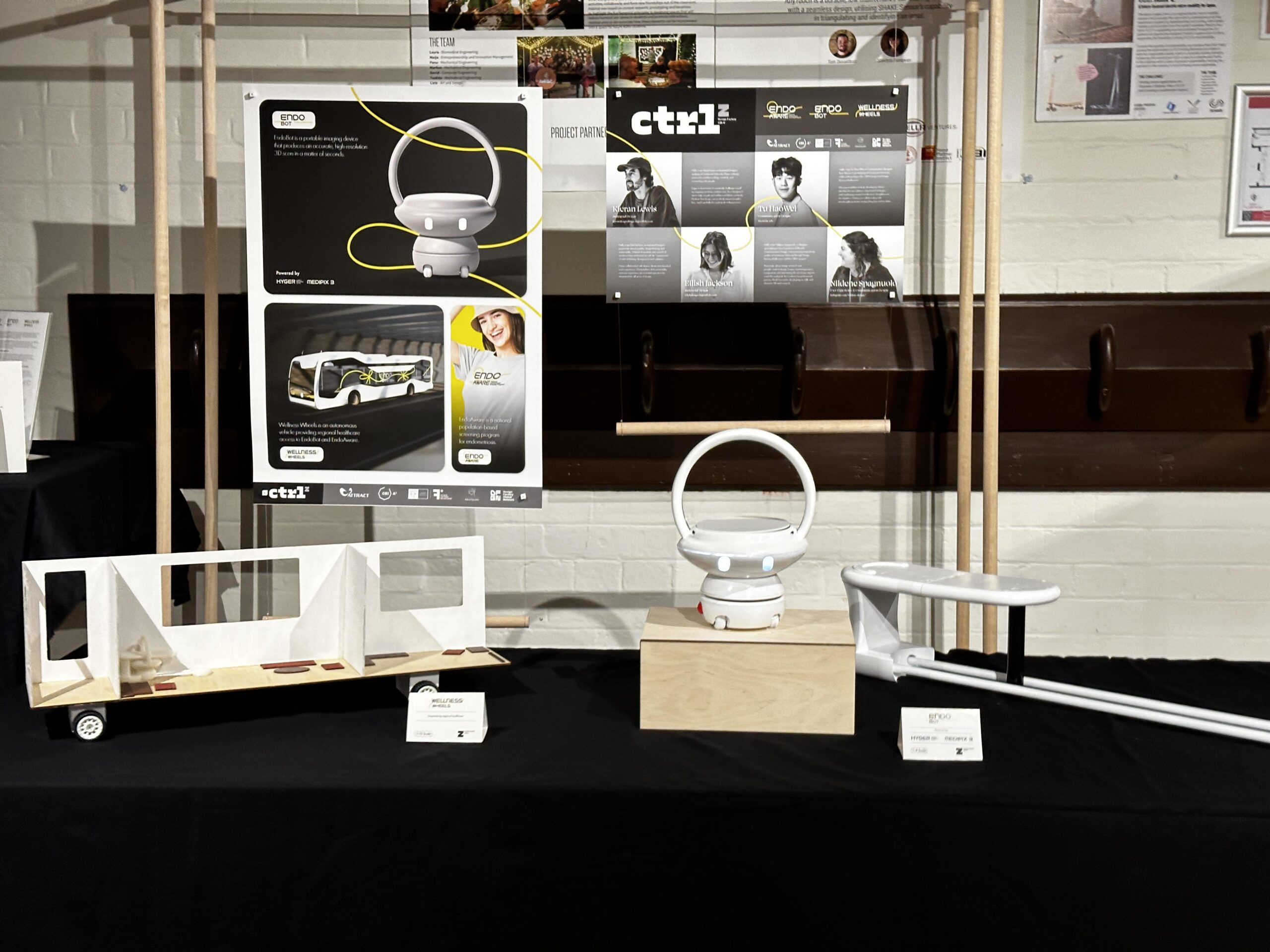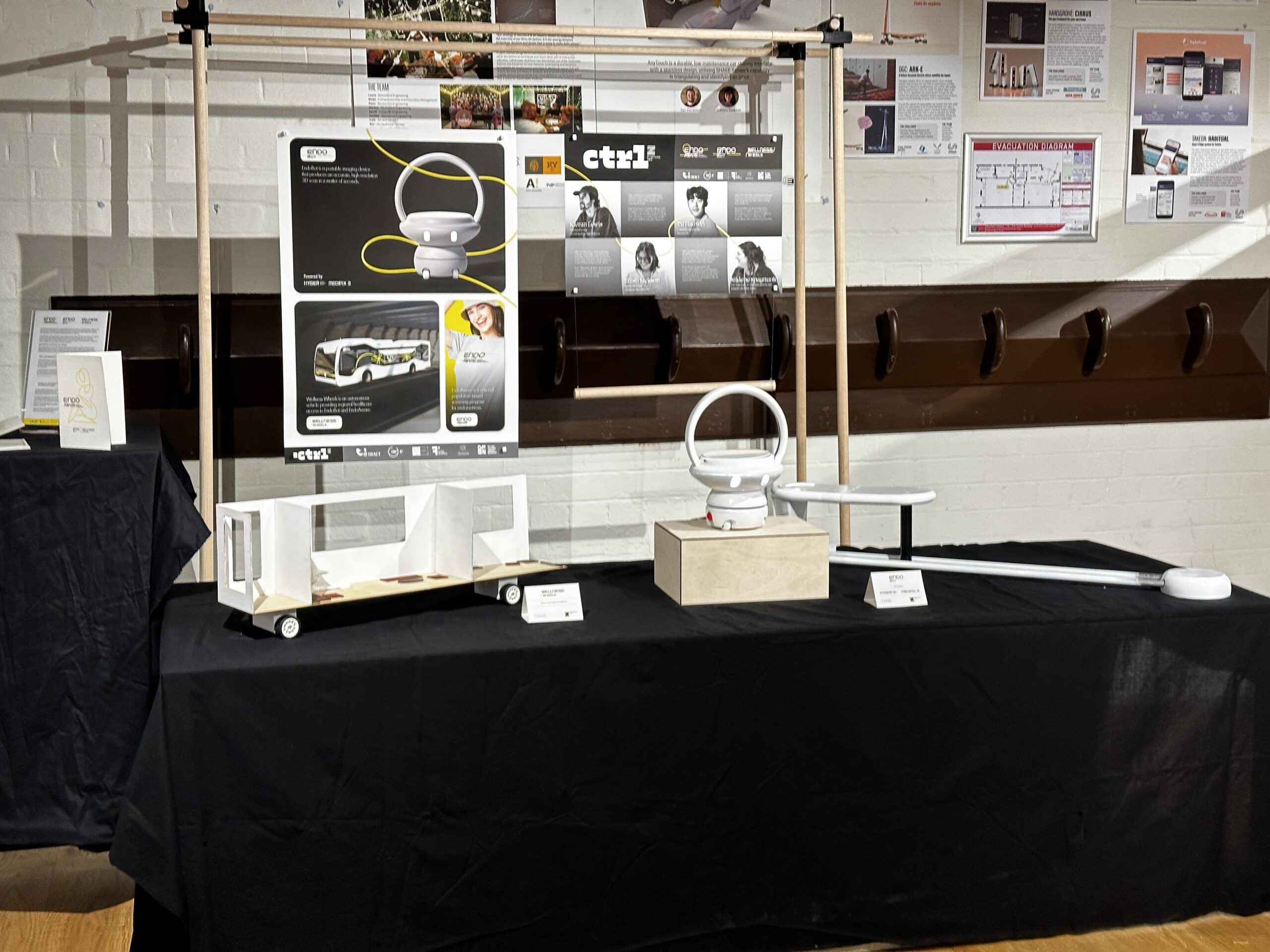“I wish there was a way to know you were in the good old days before you actually left them.” – Andy Bernard (Ed Helms, The Office, S9E23, 2013)
Well, we aren’t quite done to start reminiscing, though we have been through so much in last 8 months and we’ve achieved so much more than we thought possible. Now, it’s time to showcase all that we’ve done since The Freeze. We recommend strapping yourselves in, there is so much we’re going to go through!
Solution Summary
We are proposing the establishement and implemenation of a national population-based screening program for endometriosis, supported by deep technology, educational resources and transportability to provide wider access to Australians. The program, EndoAware, will utilise EndoBot, a deep technology scanner diagnostic tool, and Wellness Wheels, an autonomous medical bus. EndoAware will also be the overarching promotional and educational system to increase awareness of endometriosis and other reproductive and gynaecological health concerns.
EndoBot is a highly efficient and accurate medical scanner that creates a 3D colour image in a faster time and at a higher resolution than the current technology available with ultrasounds and MRIs. It stands at around 1.3 metres tall, and 1 metre in diameter. It features an interchangeable base; one with wheels, to allow for autonomous movement of the scanner within any given space, and one that allows for direct secure locking onto a rail-based bed accessory. EndoBot uses both MediPix3, a CERN technology, and HYGER, an ATTRACT Technology; MediPix3 is a the scanning technology that allows for 3D colour scans to take place with EndoBot, while HYGER is an infrared technology that allows for EndoBot to make its own adjustment when moving around its environment (on its wheeled based) or microadjustments to the arch (where the MediPix3 scanning technology is housed) in the case where patient is not completely still during a scan. This allows for a more accurate and pristine image result. HYGER’s infrared technology is similar to that in self-driving vehicles, and as we move to 2030, we see EndoBot becoming more autonomous, allowing for clinical visits to patients in medical rooms (i.e. hospital settings) and other settings. This autonomy, we hope, will assist with providing more time for doctors and medical professionals to attend to their other patients.
EndoBot will be available to use in most medical settings, including hospitals, medical imaging centres and medical clinics. Other applications of EndoBot will also include within emergency vehicles and home environments. Anyone who is eligible for Medicare within Australia will be able to access EndoBot scanning under the public healthcare system, both for the national endometriosis screen and for other healthcare imaging scans. Those who are not eligible for Medicare in Australia will also have access to EndoBot scans, but their appointment will incur a fee for the type of scan, area, clinicians involved and other administrative instances. This fee will go towards the use of EndoBot and its longevity in the Australian healthcare system into the future. Those wishing to access the scanner through private healthcare, outside of the endometriosis national screen, will also be able to do so in the case that the patient would like to circumvent the short waiting list for use of EndoBot. We do not anticipate the over waiting period for an EndoBot scan being more than 3 weeks at any given time, considering that the scan times themselves are only a few minutes (and only 3-4 seconds by 2030, as per what we’ve learned from Professor Anthony Butler regarding the future development of MediPix3 technology).
To further increase access to the EndoAware screening program and EndoBot scanning, we have also established and designed Wellness Wheels. This is an autonomous medical bus that attends regional areas around Australia on a 2-week rotation throughout the year. This rotational schedule for the bus is facilitated by a team of healthcare workers, including registered nurses, doctors and administrative staff. The team would have a minimum of 6 people, with at least 2 nurses and 2 doctors to support the appointments for the endometriosis national screenings at Wellness Wheels locations. The bus itself is designed to be warm and welcoming, and provides a private space for constultations and a private space for scanning appointments with EndoBot. These spaces are also flexible, with the separating wall able to be folded away to create a more open space. This larger space is able to host EndoAware promotional and educational programs; these can be scheduled during the 2-week stay of the Wellness Wheels or booked for specific orgnaisations to provide educational resources.
To find out more about our final design, we’ve collated our solution video, presentation slides and our white paper report into one post; you can find it here.
Team Snapshot
These passed few weeks have been a whirlwind but we’ve made it to our final presentation with a functional prototype!
Other highlights:
- Nildene is sad that she can’t share more funny quotes and puns.
Quote of the Week:
“It moves, I love it!” -Eilish Jackson, about the EndoBot prototype













0 Comments